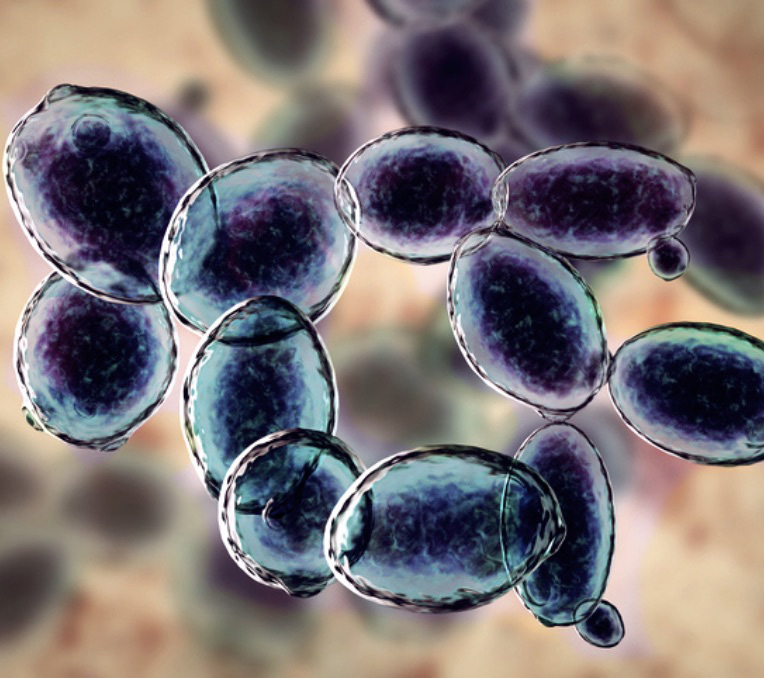Lesaffre, a key global player in fermentation, and the Laboratory of Biology and Modelling of the Cell (LBMC, CNRS / ENS Lyon) have taken an important step in their collaboration which started in 2021. Thanks to this partnership, Lesaffre could benefit from new high-flow methods and a softwares allowing to define transcriptomic and genomic profiles of thousands of yeast strains, by relying on an advanced equipment – biofoundry – installed in the new Lesaffre Campus in Marcq-en-Baroeul (France, 59).
The project named « baker yeast genomic analysis » consists in sharing Lesaffre and LBMC expertise in the genomic analysis field in order to develop an analysis method and a software tool necessary in yeast strains transcriptomic analysis and use it within Lesaffre R,D&I works.
In the last years, genomic scope has been completely transformed by the arrival of new sequencing techniques, commonly named NGS (for Next Generation Sequencing). The large data which is produced by NGS and its analysis requires dedicated informatic tools (bioinformatics). Generic tools are made available by the scientific community, but their usage requires a specific software implementation for each application and equipment.
A project at the crossroads of public and private interests
The LBMC is currently developing a new high-flow analysis method, which ambition is to be able to quantify in only a few days experience, the transcriptomic profile of thousands of yeast strains. This development involves the setting of innovative experimental protocols and special software for NGS data analysis.
Lesaffre has been leading genetic and genomic research for several years now, which allows to understand physiological, cellular, and metabolic properties of microorganisms, especially yeasts. Lesaffre owns one of the most important private collections of yeast strains and plans to enrich and use it to its full potential.
In this context, R,D&I teams focus on establishing every yeast strain identity card in order to classify them and make their detailed description. Beyond genome characteristics, Lesaffre also tends to explore yeast cellular responses to mutations and environmental conditions.
« Thanks to the biofoundry installed in the new Lesaffre Campus, R,D&I teams are able to sequence yeasts strains with high flow. But it is essential to have new high-flow transcriptomic analysis methods. Thanks to this collaboration between the LBMC team specialised in « Genetic complexity of living systems » and Lesaffre experts, new experimental protocols and software tools necessary to these analyses could see the light of day in just over a year. » says Mathieu Clément-Ziza, Head of Data Science and Bioinformatics at Lesaffre.
Shared objectives useful to both Lesaffre and the LBMC
As part of the project, the main objective is to obtain a genomic analysis pipeline able to produce a thin « identity card » of every yeast strain, based on NGS raw data coming from this strain’s genome. Lesaffre will use this software to characterize industrial strains, and the LBMC in order to follow functional mutations of laboratory strains, within the process of molecular and basic cellular activity tests.
Also, this project will allow to implement high-flow transcriptomics in various functional exploration projects as part of Lesaffre works. For the LBMC, the aim is also to design the study of the distribution of effects of random mutations on gene expression regulation in a controlled environments in laboratories.
At this stage, three experts within the LBMC oversee the experimental aspect, and the software conception requires the involvement of an additional person involvement. Also, in the context of governmental plan « France Relance », both Lesaffre and the CNRS have been able to reinforce their partnership through a private-public collaborative research contract, which specificity is to support youth employment. During two years, a computational biology engineer will share his time between Lesaffre (60% ) and the CNRS in order to develop these complex software tools, and the state will take in charge a part of his remuneration.
« For Lesaffre, accelerating innovation in the fermentation field also includes our capacity to manage, qualify and process the complexity of collected data, by relying on mathematics and informatics. It is in this perspective that we wished to share our expertise with Gaël Yvert and his team from LBMC, in order to develop together tools and methods which will allow us to go faster, to innovate faster, in the service of our customers, and then pursue the Group mission: working together to better nourish and protect the planet. » analyses Christine M’Rini, Chief R,D&I Officer at Lesaffre.
The LBMC (Laboratory of Biology and Modelling of the Cell) is a research laboratory from the CNRS and the ENS based in Lyon, which focuses and cellular and molecular biology, especially on the regulation of cell growth, differentiation, and cell death. LBMC researchers use various techniques, including genetics, biochemistry, molecular biology, microscopy, and computer modeling to study cellular processes. Research works led at the LBMC have implications in several fields, including industrial biotechnologies, medicine, or microorganism fermentation processes.
« This stimulating project comes from the meeting of private company Lesaffre and LBMC interests, a public laboratory of fundamental research. It is with these interests in mind that we have been able to build a solid partnership, which will serve both Lesaffre’s projects, and the works carried out by our teams within the CNRS. The sharing of expertise, the constructive exchanges, and the collaborative spirit that we have with Lesaffre are the recipe that allows us to boldly move through the stages of this project. » declares Gaël Yvert, Research Director at the CNRS.


